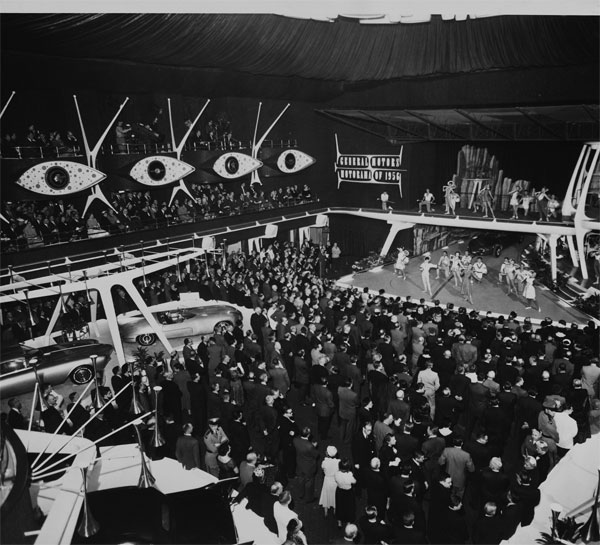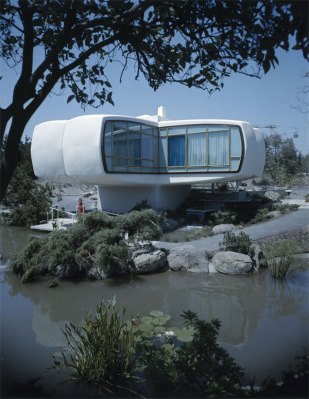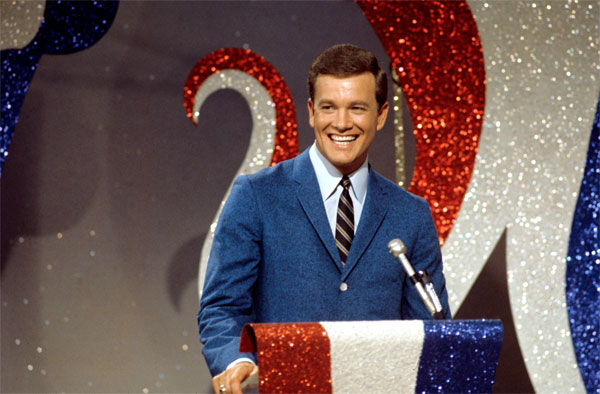The best way to predict the future, as Alan Kay famously said, is to invent it. For decades, however, well-known technology companies have tried an easier approach: filming it.
They’ve done so in the form of short movies featuring mocked-up versions of the wondrous technologies that will be everyday realities for the consumers of tomorrow. (Many of the tomorrows in question — 1960, 1976, 1986, 1999, 2o04 — have since come and gone.) These films tend to have a self-important feel, as if paying actors to pretend to interact with make-believe gadgets was a vital part of bringing said gadgets to market. Even though the companies that produced them have only rarely gone on to make the products they depict.
Now that we do live in the future, we know that some of the movies’ visions were on target: for instance, they repeatedly showed in-home videoconferencing that’s very much like Skype or FaceTime. But all of them are at least as fascinating for the things they got wrong as the ones they got right.
Thanks to the futuristic miracle known as YouTube, many of these productions are readily available for viewing, including both golden oldies and recent efforts. Would you join me as we watch a bunch of them and ponder the predictions they made?
To New Horizons (General Motors, 1940)
[youtube=http://www.youtube.com/watch?v=aIu6DTbYnog?w=480]
Year depicted: 1960
Futuristic items shown: massive high-speed highways; cars guided by radio signals to avoid accidents; quarter-mile-high skyscrapers with landing decks for helicopters and autogyros; elevated pedestrian highways that allow for double-wide roads below.
Amusing anachronisms: The automobiles and architecture of 1960 look suspiciously like the automobiles and architecture of 1940.
Backstory: One of the signature exhibits at the 1939/1940 New York World’s Fair was General Motors’ Futurama, an enormous, dazzling ride-through diorama depicting life in “the wonder world of 1960.” It was created by visionary designer Norman Bel Geddes, whose visions usually involved something that GM found irresistible: cities centered entirely around automotive travel. To New Horizons begins with some black-and-white boilerplate footage about how swell America is, then segues (at 7:52) into color film of the Futurama, which still looks eye-popping.
Creepiest moment: when the narrator explains that “undesirable slum areas” have been “displaced” by the super-highways. It’s not clear whether the future is so prosperous that poverty is a thing of the past, or whether the poor people were shipped off somewhere else to make way for progress.
In the years after the Futurama’s debut, massive highways did come to blanket the country. But not all of GM’s predictions/wishes came true by 1960 — and more than half a century later, Google is still working on that self-driving car idea.
Design for Dreaming (General Motors, 1956)
[youtube=http://www.youtube.com/watch?v=EunL8pDPZpg?w=480]
Year depicted: not specified
Futuristic items shown: push-button automated kitchen with smartcards and video screen; GM concept cars such as the gas-turbine Firebird II; electronic highway of the future.
Amusing anachronisms: The kitchen of the future is stocked with glass milk bottles which look like they were delivered that morning by a friendly milkman.

Getty Images
Backstory: From 1949 to 1961, General Motors held its own car shows, which came to tour the country under the name Motorama. They featured new cars and concept cars such as the Firebird and its successors; parts of Design for Dreaming were filmed at the 1956 edition. It’s not exactly shocking that the movie’s miracles, like those depicted in To New Horizons, involved car-centric cities and GM vehicles humming along endless highways.
Design for Dreaming stars dancers Tad Tadlock (she’s a she) and Marc Breaux; the latter speaks with a voice dubbed by Thurl Ravenscroft, the voice of Tony the Tiger. It’s a bizarre extended dream sequence with ballet, bad poetry, designer fashions, GM cars, a Frigidaire-equipped future kitchen (the appliance company was part of GM at the time) and much, much more. (The futuristic bits begin at 3:20.)
It all must have been a trifle odd even in 1956; today, it’s unimaginably peculiar. But GM apparently liked it: For 1961’s Motorama, it commissioned a film called A Touch of Magic that’s all but a remake of Design for Dreaming.
Bonus footage: This GM clip, with a wonderfully inaccurate preview of automotive travel in the year 1976, was apparently produced for the 1956 Motorama. It stars the company’s Batmobile-like Firebird II concept car, with GM engineer Emmett Conklin as the Bing Crosby-like dad.
[youtube=http://www.youtube.com/watch?v=TH3d3nQX4L0?w=480]
The Monsanto House of the Future (Monsanto, 1957)
Year depicted: 1986
Futuristic items shown: adjustable ceiling lighting panels; ultrasonic dishwasher that doubles as storage; “cold zones” instead of a refrigerator; automatically-lowering cabinets; automatically-rising microwave oven; push-button climate control with aroma-emitting feature; Touch-Tone speakerphone; adjustable sink; built-in electric razor and toothbrush; one-way bathroom videoconferencing.
Amusing anachronisms: The house still looks avant-garde on the outside, but the interior is so very Father Knows Best.

Getty Images
Backstory: Two years after Disneyland opened in 1955, the Anaheim theme park added an attraction called the House of the Future, a walk-through exhibit located in Tomorrowland. It was sponsored by Monsanto, at the time a major manufacturer of plastics. So the whole thing was a shameless plug for plastic — and the home itself and most of the items it contained were made of it. This film, featuring a tour of the Disneyland house, was similarly promotional in nature.
Plastic houses, strangely enough, never caught on, but some of the things inside the home did become pervasive well before 1986, including Touch-Tone phones and microwave ovens. Still, I suspect that the attraction had gotten stale well before it was torn down in 1967. (And my favorite feature of the house wasn’t anything futuristic — it was the sweeping views it boasted of Cinderella’s castle and the Matterhorn.)
Postscript: In the 1990s, Monsanto apparently decided that the future wasn’t made out of plastic after all, and sold off its divisions that made the stuff.
1999 A.D. (Philco-Ford, 1967)
Year depicted: 1999
Futuristic items shown and mentioned: modular honeycomb home with computer room; the colonization of Mars; widescreen digital workbench with archived photos; home computers; computer-based bridge games; education room with giant interactive screen; computerized homework; computerized meal planning; automated kitchen with frozen food and microwave oven; computerized climate control; disposable clothing; color-keyed disposable dishes; TV-based shopping; video home monitoring system; online banking and taxes; printers; “home post office” e-mail; Internet-like fault-tolerant network; hydrocultured exotic seafood; computerized music lessons; home health center with computerized recording of vital statistics and exercise recommendations; videoconferencing; computerized chess; home movies in 3D on giant screen with “duping” capability.
Amusing anachronisms: The movie not only failed to predict the then-imminent revolution known as women’s lib but seems to say that fewer women would have jobs outside the home in the future. Also, the home computer appears to be a mainframe with lots of switches and flickering lights.

Getty Images
Backstory: Produced by Philco — then a division of Ford which made TVs and aerospace computers, among other things — this is the Citizen Kane of corporate future-vision movies. (It’s so perfect that some have assumed it must be a hoax.)
It stars Wink Martindale (not yet a beloved game-show elder statesman) and an alien from Star Trek. It goes on and on and makes prediction after prediction. And an impressive percentage of its prognostications have more or less come true.
Despite being set in 1999, the film has an overpowering 1960s vibe, thanks to everything from the fashions and hairstyles to the oddly foreboding music. And the gadgetry all looks more like vintage stereo equipment than anything that really dates from 1999. It’s as if Mad Men somehow fast-forwarded itself and became The Jetsons.
(MORE TECH NOSTALGIA ON TIME.COM: The 50 Worst Inventions)


